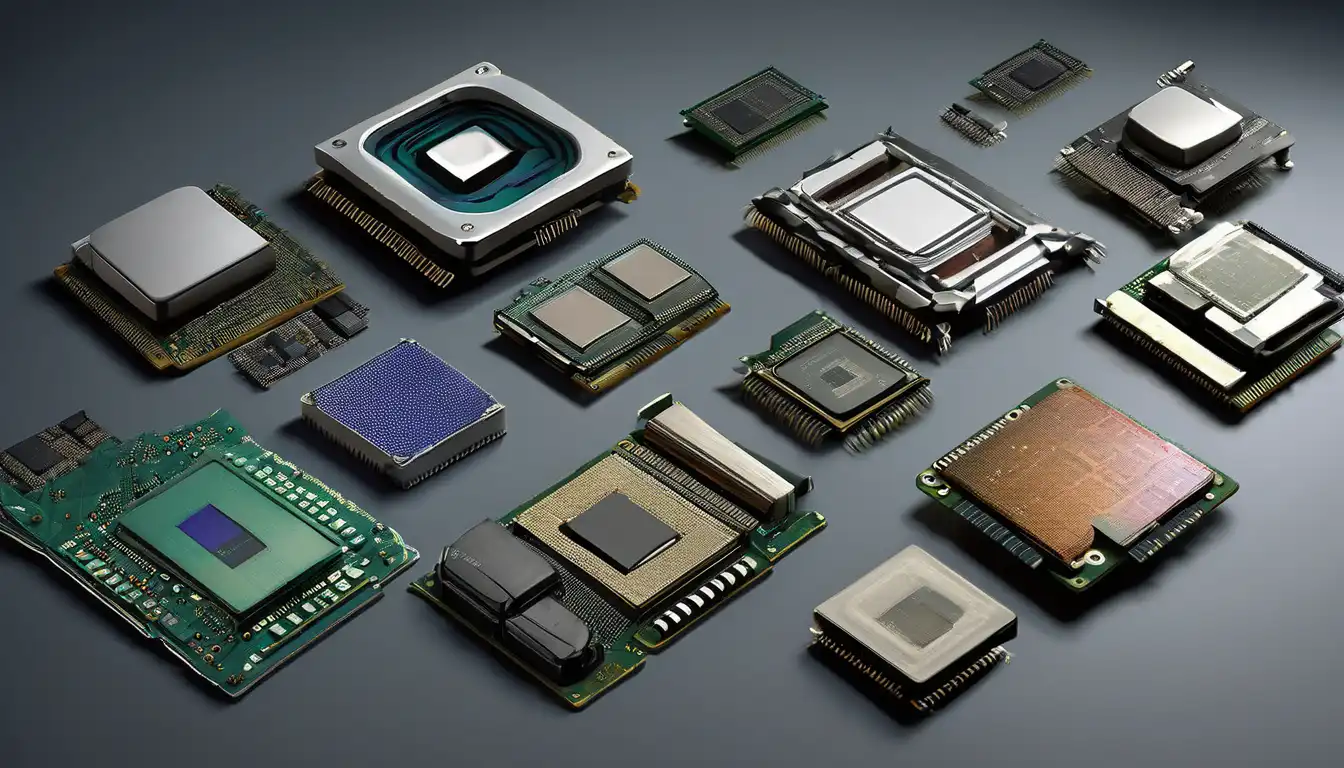The Dawn of Computing: Early Processor Technologies
The evolution of computer processors represents one of the most remarkable technological journeys in human history. Beginning with primitive vacuum tube systems in the 1940s, processors have undergone revolutionary changes that have fundamentally transformed how we live, work, and communicate. The first electronic computers, such as ENIAC, utilized thousands of vacuum tubes that consumed enormous amounts of power and required constant maintenance. These early processors operated at speeds measured in kilohertz, yet they laid the foundation for the digital revolution that would follow.
The Transistor Revolution
The invention of the transistor in 1947 at Bell Labs marked a pivotal moment in processor evolution. Transistors replaced bulky vacuum tubes, offering smaller size, lower power consumption, and greater reliability. By the late 1950s, transistors had become the standard building blocks for computer processors, enabling the development of more compact and efficient computing systems. This transition paved the way for the second generation of computers, which saw significant improvements in processing speed and reliability while reducing physical size and power requirements.
The Integrated Circuit Era
The 1960s witnessed another breakthrough with the development of the integrated circuit (IC), which allowed multiple transistors to be fabricated on a single silicon chip. Jack Kilby and Robert Noyce independently developed the first working integrated circuits, revolutionizing processor manufacturing. This innovation led to the creation of the first microprocessors in the early 1970s, with Intel's 4004 processor representing a landmark achievement. The 4004 contained 2,300 transistors and operated at 740 kHz, demonstrating the potential of microprocessor technology.
The Rise of Personal Computing
The introduction of the Intel 8080 and subsequent processors fueled the personal computer revolution. Processors like the Zilog Z80 and MOS Technology 6502 powered early home computers, making computing accessible to millions. The 1980s saw the emergence of 16-bit processors, including the Intel 8086 and Motorola 68000, which offered significantly improved performance and memory addressing capabilities. This era also witnessed the beginning of the x86 architecture that would dominate personal computing for decades to come.
The Microprocessor Revolution Accelerates
The 1990s marked an era of rapid processor evolution, driven by Moore's Law and intense competition between manufacturers. Intel's Pentium processors brought superscalar architecture to mainstream computing, while AMD and Cyrix offered competitive alternatives. Processor speeds escalated from tens of megahertz to gigahertz ranges, with architectural improvements including pipelining, cache memory, and multimedia extensions. The transition to 32-bit processing became standard, enabling more sophisticated operating systems and applications.
Multi-Core Processors and Parallel Computing
As physical limitations began challenging single-core performance scaling, the industry shifted toward multi-core architectures in the early 2000s. Dual-core, quad-core, and eventually processors with dozens of cores became commonplace. This parallel computing approach allowed for continued performance improvements while managing power consumption and heat generation. Modern processors now incorporate heterogeneous computing, combining different types of cores optimized for specific tasks, from high-performance computing to energy-efficient operation.
Modern Processor Architectures
Today's processors represent the culmination of decades of innovation. Features like out-of-order execution, speculative execution, and advanced branch prediction have become standard. The integration of graphics processing units (GPUs) directly onto processor dies has created powerful system-on-chip (SoC) designs. Process manufacturing has shrunk to nanometer scales, with current technologies operating at 5nm and below. These advancements have enabled unprecedented computing power in devices ranging from smartphones to supercomputers.
Specialized Processing and AI Acceleration
The latest evolution in processors involves specialization for specific workloads. Tensor processing units (TPUs), neural processing units (NPUs), and other specialized accelerators have emerged to handle artificial intelligence and machine learning tasks efficiently. This trend toward heterogeneous computing reflects the diverse demands of modern applications, from real-time video processing to complex data analytics. The integration of these specialized units alongside traditional CPU cores represents the current frontier in processor design.
Future Directions in Processor Technology
Looking ahead, processor evolution continues toward several exciting frontiers. Quantum computing promises to revolutionize processing capabilities for specific problem types, while neuromorphic computing aims to mimic the human brain's efficiency. Advances in materials science, including graphene and other two-dimensional materials, may enable new transistor designs. Photonic computing, which uses light instead of electricity, offers potential for dramatically increased speeds and reduced power consumption. These emerging technologies suggest that the evolution of computer processors is far from complete.
Sustainability and Energy Efficiency
An increasingly important aspect of processor evolution involves sustainability and energy efficiency. As computing becomes more pervasive, reducing the environmental impact of processors has become a critical design consideration. Modern processors incorporate sophisticated power management features, dynamic frequency scaling, and advanced sleep states to minimize energy consumption. The industry is also exploring more sustainable manufacturing processes and materials to reduce the ecological footprint of processor production.
The evolution of computer processors demonstrates humanity's relentless pursuit of computational power and efficiency. From room-sized vacuum tube systems to nanometer-scale chips containing billions of transistors, this journey has transformed every aspect of modern society. As we look toward future developments in quantum computing, neuromorphic architectures, and beyond, the continued evolution of processors promises to unlock new capabilities and applications that we can only begin to imagine. The story of processor evolution is ultimately the story of technological progress itself, reflecting our ongoing quest to push the boundaries of what's possible in computing.
